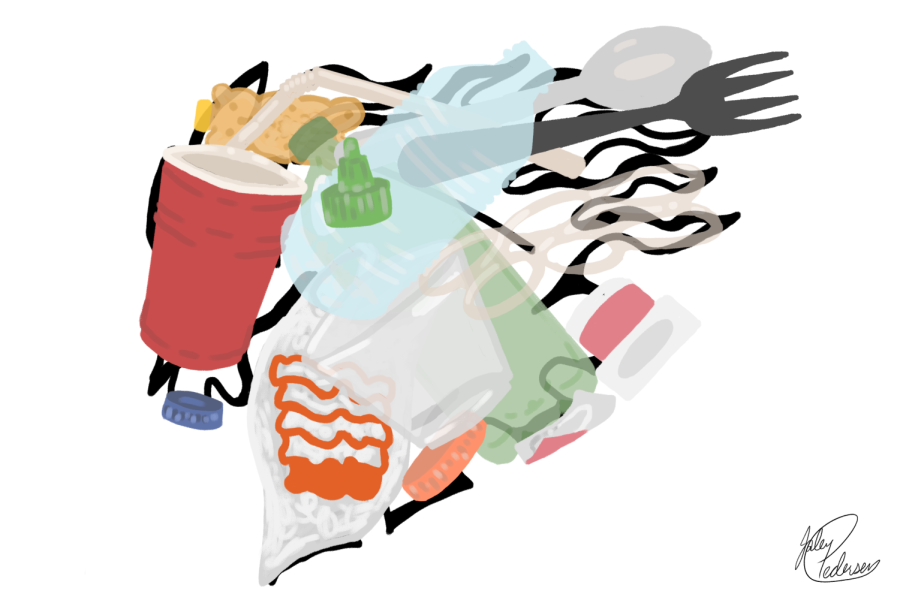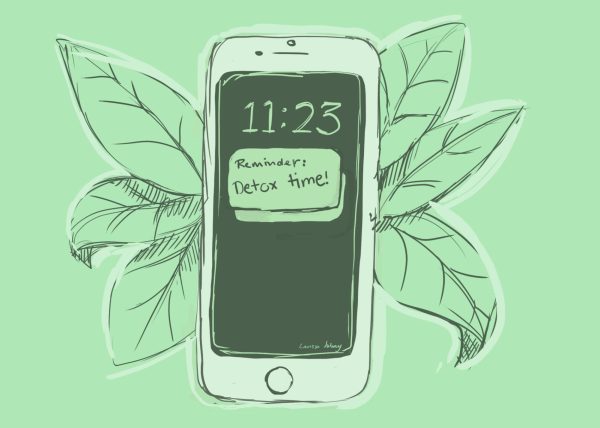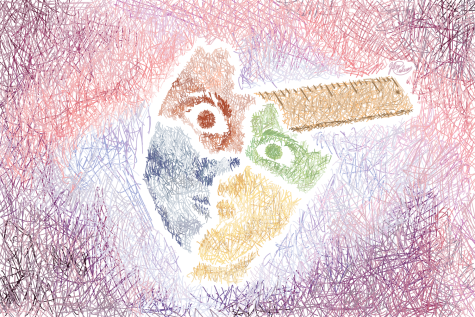Academy’s Plastic Problem
Akilan examines Academy’s excessive use of plastics on campus
We generate nearly 3000 lbs. of plastic each year just at the bookstores, cafe, and concession stands. Yikes!
Each year, our school is throwing away almost three thousand pounds of plastic. And we can avoid wasting all of it.
I recently conducted an in-depth study on the extent to which our school relied on single-use plastic over the last school year, from September 2021 to May 2022. I found that Albuquerque Academy used over 2,700 pounds—almost 1.5 tons—of plastic just last year from selling products from the bookstores, concessions, and Common Grounds. What’s more, since this figure solely represents the contributions of only three areas of our campus, and does not account for any of the plastic used in classrooms or for other extracurricular events, the total single-use plastic use for our entire campus could be several times higher. Altogether, the striking results of this study demand that the school takes immediate action to reduce our consumption of single-use plastic. I believe that, by the end of 2025, we must either implement effective alternatives to plastic containers or we must completely eliminate the sales of any drinks with plastic containers. If that sounds crazy, don’t worry; it’ll make more sense if you dive into the details. Read on!
Analysis: Evaluating The Current Influence of Plastics
I began by analyzing the amount of plastic used in Common Grounds café. I combined raw data on how many of the various drinks and snacks were bought in the bookstore with publicly available data on the presence of plastic in each of these items’ containers. For example, a 12-ounce container of boba tea sold in Common Grounds contains 0.504 ounces of single-use plastic. Three products sold by Common Grounds are the biggest plastic culprits: boba tea, with nearly 2,859 such containers purchased last year, smoothies (4,026 containers, contributing 150 pounds of plastic), and Sparkling Ice drinks (958 containers; 55 pounds of plastic). All of the drinks and snacks combined from Common Grounds resulted in a total of 444 pounds of plastic.
Surprisingly, however, Common Grounds wasn’t the biggest offender. A similar analysis for items bought in the Academy bookstores combined data from both the East Campus and West Campus locations. The bookstores offer a much wider variety of items, most of which are in high demand throughout the school year. Thus, I found that the items in the bookstores single-handedly account for 1,755 pounds of plastic used on our campus, which was 65% of all of the plastic accounted for in the survey. Unlike the case of Common Grounds, there were more than a handful of things which significantly added to the total amount of plastic—however, the largest contributors to this total were Gatorade (5,033 bottles; 429 pounds of plastic), Powerade (3,158 bottles; 215 pounds of plastic), Simply drinks (4,239 bottles; 128 pounds of plastic), Smart Water (2,500 bottles; 287 pounds of plastic), and Body Armor shakes (2,469 bottles; 235 pounds of plastic).
The third and final source that I analyzed was plastic from items sold at concession stands at sporting events. The data from these sales is somewhat incomplete and does not account for all possible games, implying that the numbers are larger than reported. Still, these concession stands contributed 510 pounds of plastic to the total. This amount originated from two sources: plastic water bottles (4,660 bottles sold) and, again, Gatorade (3,879 bottles).
All told, Common Grounds, the bookstores, and the stadium concession stands used over 2,700 pounds of plastic just last year. However, the sources from which this plastic arises are just as important as the figure: the vast majority of this plastic originates from containers for sugary drinks that are not only damaging to our environment but also not very healthy.
Looking Forward: Possible Solutions
This analysis shows that we generate 2.3 pounds of plastic per year for each person—1,183 in all—on campus. We must make changes that will reduce the impact of plastics on campus. Although policy change is always difficult to execute, especially when it comes to dealing with larger-scale climate issues, the advantage of working on a smaller scale is that we can make immediate changes with immediate impacts. For example, we could switch to using ceramic plates in Common Grounds instead of covering cinnamon rolls with plastic wrappers. Although the issue of washing the plates arises, the long-term environmental impact will certainly outweigh the extra work required. Some of this extra work might involve the addition of a dishwasher to the cafe, and it will also likely require extra labor—which is where we can always turn to students who are willing to volunteer for their community service credit. We can also make similar efforts to phase out plastic drink bottles in the bookstore and replace them with bioplastic containers.
Thus, my proposal is as follows: let’s try to completely eliminate single-use plastics from the bookstore, Common Grounds, and concessions by the end of 2025. If we cannot do so, then we must cut the sales of these items. I acknowledge that these places exist for a reason, and I certainly do not want to eliminate them from our campus. But we must actively do something to address this issue, and this policy is the only option. Our situation is so desperate that any smaller change will be insufficient to accomplish what it must. And even though the 2025 deadline likely sounds like an arduous goal, our school has been able to implement many other proposals extremely quickly (such as the much larger project of the path renovation)—and this is only possible if we go all in.
All told, you shouldn’t stop going to Common Grounds or the bookstore because of this data. That’s not the point. And don’t think that you need to stop buying your favorite boba tea flavor either. Instead, every time you buy your favorite chocolate scone from Common Grounds, every time you run to the bookstore to snatch a Gatorade Glacier Freeze right before C block, every time you go shopping at Smith’s and use some plastic bags to carry your groceries, I encourage you to consider solutions to this plastic problem, especially from a local standpoint. If we don’t come up with solutions in the next two years, we need to start phasing plastics out of our campus—and we might need to do it the hard way. We can start by fixing this issue in our school, in our community, and in our city. And if it works, we might even be able to extend these methods to tackle the large-scale problems as well. We won’t be saving the world from extreme climate events. We’re not anywhere near there yet. But we’ll still be taking a step in the right direction, creating a precedent for change, and establishing awareness in our communities that we can do something to make these difficult issues more approachable.

Haley ‘25 is the Advocate’s Graphic Art Editor. Their overall artist career sprouted at a young age from their various dragon sketches and drawings,...







